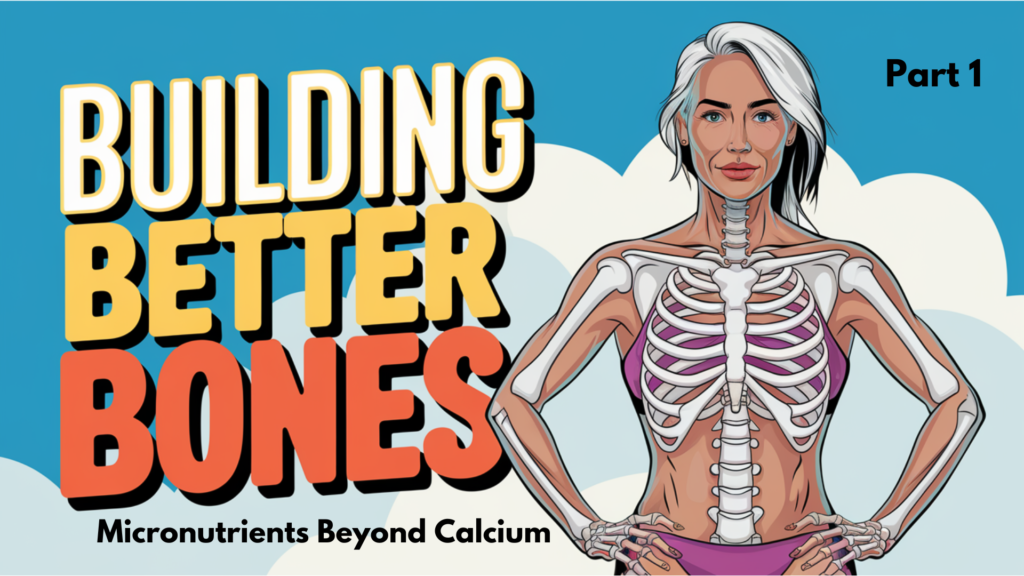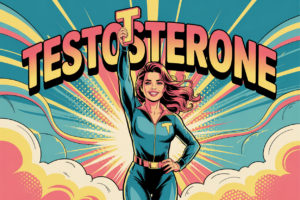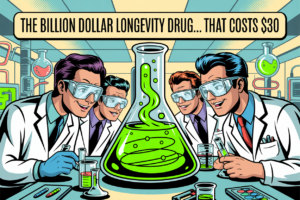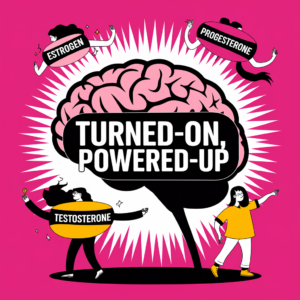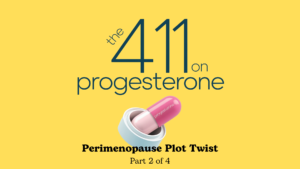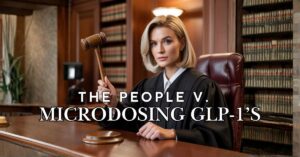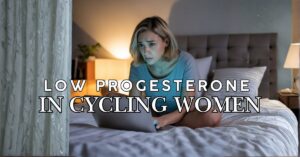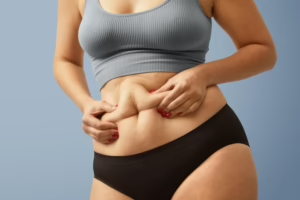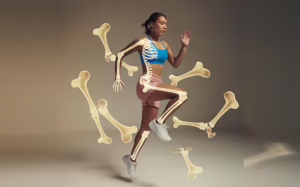You’ve heard it since childhood: “Drink your milk for strong bones!” But the story of bone health—especially for women—is far more fascinating and complex than simply guzzling dairy.
Today, I’m kicking off a two-part series on building genuinely healthy bones. And, spoiler alert: the conventional wisdom you’ve heard might be only half the story.
The Bone Bank Account: Deposits and Withdrawals
Think of your skeleton as a biological bank account. Throughout your life, you’re either making deposits (building bone) or experiencing withdrawals (losing bone). Until about age 30, you’re generally in the black, accumulating peak bone mass. After that, especially for women approaching menopause, the account starts experiencing more withdrawals than deposits.
The goal isn’t just to slow down the withdrawals—it’s to keep making strategic deposits throughout life.
Estrogen: The Unsung Hero of Bone Health
If calcium is the brick in bone building, estrogen is the master architect overseeing the entire construction project.
Estrogen doesn’t just participate in bone maintenance—it orchestrates it. This hormone maintains skeletal integrity through an elegant dual approach:
- It puts the brakes on osteoclasts (cells that break down bone)
- It extends the lifespan of osteoblasts (cells that build bone)
When menopause hits and estrogen levels plummet, this delicate balance is disrupted. Without the architect’s supervision, bone resorption accelerates dramatically, increasing fracture risk four-fold within just five years after menopause.
That’s why the conversation about bone health in women cannot happen without addressing estrogen. I did an in-depth dive into how much and what type of estrogen you need for healthy bones in “Bone Appetit: How Much Estrogen Does Your Skeleton Need” if you want to review that now.
The Truth About Bisphosphonates: Denser ≠ Stronger
Conventional medicine’s go-to solution—bisphosphonates like Fosamax (alendronate)—certainly increases bone mineral density. Your DEXA scan numbers might look better, showing a 50% reduction in vertebral fractures over three years.
But here’s what your doctor might not emphasize: these medications don’t necessarily create healthy bone.
Bisphosphonates work by essentially embalming your existing bone structure—preventing natural breakdown but also hindering renewal. Imagine preserving an aging wooden bridge by coating it with concrete. It might scan as “denser” on measurements, but is it truly stronger and more resilient?
This is why long-term use comes with concerning risks like atypical femoral fractures and osteonecrosis of the jaw. After about five years, many doctors recommend a “drug holiday”—a tacit acknowledgment that perpetually blocking your body’s natural bone remodeling process isn’t ideal.
The Micronutrient Symphony: Beyond Calcium
Building truly healthy bones requires an orchestra of nutrients working in harmony:
Vitamin D3: The Gatekeeper
Vitamin D isn’t just another supplement—it’s the gatekeeper determining whether the calcium you consume enters your bloodstream. Without adequate D3, your intestines absorb a measly 10-15% of dietary calcium. With sufficient levels (aim for blood levels of at least 50 ng/mL), that efficiency jumps to 30-40%.
For postmenopausal women, vitamin D deficiency is linked to a 70% higher hip fracture rate. The solution? A daily 2000 IU vitamin D3 supplement can increase bone mineral density by about 2% within a year.
Side note: I like my patients to have a blood vitamin D level of at least 50 ng/ml, which means either supplementing with a higher dose (ie 5000 iu/day) or going outside and getting a bit of sun. I’m a big fan of strategic sun exposure (never burning!) for kickstarting vitamin D production (as well as for the many other benefits).
Vitamin K2: The Traffic Director
Here’s where the story gets really interesting. Calcium is only beneficial when it lands in the right places—your bones and teeth—rather than your arteries and soft tissues.
Enter vitamin K2, particularly in its MK-7 form. Think of K2 as a traffic cop, directing calcium to your skeleton and away from places it doesn’t belong. It activates a protein called osteocalcin that helps calcium integrate into your bone matrix.
Studies show that 180 mcg daily of K2 (MK-7) increased lumbar spine bone density by 1.3% over three years. Equally important, it reduced inactive osteocalcin levels by 57%, correlating with 26% lower arterial calcification.
In other words, K2 helps ensure you’re not just consuming calcium—you’re putting it where it belongs.
Magnesium: The Overlooked Essential
Magnesium deserves more attention in the bone conversation. It is a crucial cofactor for enzymes that activate vitamin D, meaning without enough magnesium, your vitamin D can’t do its job correctly.
Low magnesium levels can reduce calcium absorption by a whopping 30%. Research shows that each 50 mg increase in daily magnesium intake correlates with measurably higher bone mineral density.
The best form? Magnesium glycinate is gentler on your digestive system, delivering about 120 mg of elemental magnesium per dose. And (bonus!) magnesium glycinate can help you relax, so it is a fantastic addition to your pre-sleep supplement stack.
Collagen: The Bone Matrix Builder
We often focus on bone mineral density, but what about the scaffold holding those minerals? That’s where collagen comes in.
Type I collagen makes up 90% of your bone’s organic matrix, providing the tensile strength that keeps bones from shattering on impact. It’s like the difference between chalk (mineral-only) and reinforced concrete (mineral plus structural fibers).
Studies show that 5 grams daily of specific collagen peptides can increase lumbar spine bone density while boosting markers of bone formation by 23% and reducing breakdown markers by 14%.
The most effective forms contain about 15% hydroxyproline, which has been shown to stimulate human osteoblast (bone-building cell) proliferation by 60% in laboratory studies. My go-to collagen products for bone contain the branded ingredient Fortibone. Fortibone is a specific brand of bioactive collagen peptides that’s designed for bone health and hydroxyproline is one of the key components. Brands such as AlgaeCal, Sparkle, and Healthy Bones Co all have collagen supplements containing Fortibone.
Remember: your skeleton isn’t just a calcium bank—it’s a living, dynamic tissue that responds to how you eat, move, and supplement throughout your life.
I’ll do more posts about bones – including how to measure bone health and how to move for seriously powerful bones!
Amy B. Killen, MD.
Author note: This is not meant as medical advice. Please always discuss with your physician any new supplements, medications, workout routines or other wellness strategies.
References:
- Frontiers in Endocrinology
Feng W, Wang W, Li P. (2024). Effects of probiotic supplementation on bone health in postmenopausal women: A systematic review and meta-analysis. Frontiers in Endocrinology.
https://www.frontiersin.org/journals/endocrinology/articles/10.3389/fendo.2024.1487998/full - Nature Scientific Reports
Krum SA, et al. (2017). Estrogen Regulates Bone Turnover by Targeting RANKL Expression in Bone Lining Cells. Scientific Reports.
https://www.nature.com/articles/s41598-017-06614-0 - Carlson Labs
Carlson Laboratories. (n.d.). Super D3 + K2: High-Potency Blend of Vitamin D3 and K2 as MK-7.
https://carlsonlabs.com/super-d3-k2/ - PubMed
Groenendijk I, et al. (2022). Impact of magnesium on bone health in older adults: A systematic review and meta-analysis. Bone.
https://pubmed.ncbi.nlm.nih.gov/34666201/ - Frontiers in Physiology
Frontiers. (2023). Effects of exercise based on ACSM recommendations on bone mineral density in individuals with osteoporosis.
https://www.frontiersin.org/journals/physiology/articles/10.3389/fphys.2023.1181327/full - EMPR
EMPR. (2024). Prescription Belt Device Gets FDA Clearance for Postmenopausal Women with Osteopenia.
https://www.empr.com/home/news/medical-technology/prescription-belt-device-gets-fda-clearance-for-postmenopausal-women-with-osteopenia/ - Frontiers in Endocrinology
Guo Y, et al. (2021). The Effect of Bisphosphonates on Fracture Healing Time and Changes in Bone Mineral Density: A Meta-Analysis.
https://www.frontiersin.org/journals/endocrinology/articles/10.3389/fendo.2021.688269/full - PubMed
Wells G, et al. (2002). Meta-analyses of therapies for postmenopausal osteoporosis. V. Meta-analysis of the efficacy of hormone replacement therapy. Endocrine Reviews.
https://pubmed.ncbi.nlm.nih.gov/12202468/ - JAMA Internal Medicine
Greendale GA, et al. (2002). Bone Mass Response to Discontinuation of Long-term Hormone Replacement Therapy.
https://jamanetwork.com/journals/jamainternalmedicine/fullarticle/211331 - PubMed
Silva TB, et al. (2024). Impact of hormone therapy on the bone density of women with premature ovarian insufficiency: A systematic review.
https://pubmed.ncbi.nlm.nih.gov/36368093/ - AHRQ Report
Agency for Healthcare Research and Quality. (n.d.). Hormone Replacement Therapy and Osteoporosis.
https://www.ahrq.gov/downloads/pub/prevent/pdfser/hrtostser.pdf - Menopause Journal
Cauley JA, et al. (2023). Discontinuation of Hormone Therapy and Bone Mineral Density. Menopause.
https://journals.lww.com/menopausejournal/fulltext/2023/12000/discontinuation_of_hormone_therapy_and_bone.5.aspx - Endocrine Reviews
Wells G, et al. (2002). Meta-Analysis of the Efficacy of Hormone Replacement Therapy in Treating and Preventing Osteoporosis in Postmenopausal Women.
https://academic.oup.com/edrv/article-abstract/23/4/529/2433275
